The Gift of South Dakota
Subscriptions to South Dakota Magazine make great gifts!
Subscribe today — 1 year (6 issues) is just $29!
Crawling a Cave
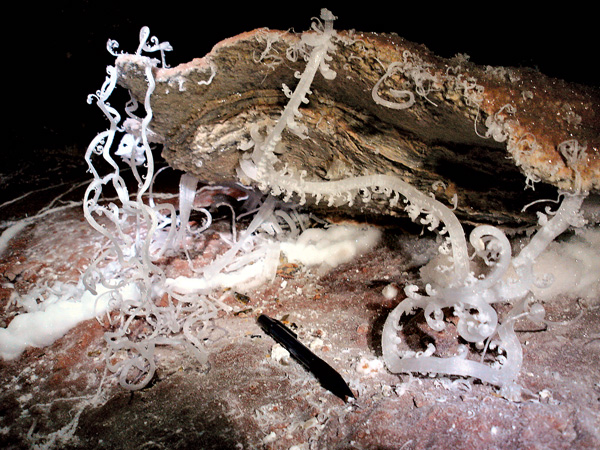 |
| Hair thin gypsum strings, a rare formation, wave slightly in a gentle breeze deep within Jewel Cave. |
My friend Ken Gartzke and I were on our way to do some exploring inside one of the earth’s greatest caves — Jewel Cave. With more than 160 miles of mapped cave it ranks as the second longest in the world, and it is thought that less than 3 percent has been discovered.
It was a great day to go caving; on the ground it was windy and cold, about 15 degrees. But most caves in the Black hills remain a constant 51 degrees year-round, and the humid air feels warm — unless, of course, you sit around for very long.
Gartzke and I were experienced cavers; not only did we explore wild caves in the Black Hills, we also mapped them, thousands of feet of uncharted passageways and chimneys of various lengths and dimensions. During the early to mid 1970s, Gartzke and I explored Wind Cave. At that time the known cave contained about 50 miles of multi-dimensional passageways, chimneys and vertical descents. Wind Cave is not necessarily a pretty cave with a lot of beautiful formations like Jewel.
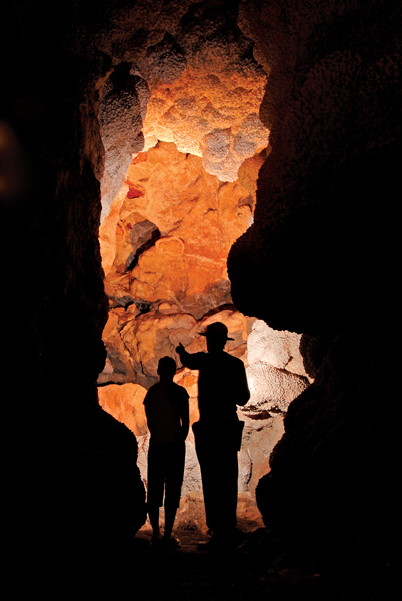 |
| Rangers lead regular tours through Jewel Cave, where the temperature remains a constant 49 degrees. |
Today Wind Cave is recognized as the fifth-longest cave in the world, with more than 130 miles of known passageways. It is also known as the densest (most passage volume per cubic mile) cave system in the world. I describe crawling around in Wind Cave as being inside a huge sponge made of limestone, definitely not a place where you want to get lost.
Jewel and Wind are barometric caves, meaning they exhale air when the outside air pressure decreases and they inhale when the outside air pressure increases. Total cave volume is estimated by measuring the amount of air the cave exhales when the outside air pressure drops, and inhales when the outside air pressure rises. Thus, 97 percent of all the air moving out of, or into the cave represents areas yet to be explored, since we know how much air volume is contained in the mapped cave area.
Gartzke and I would be exploring with world-renowned cave explorers Herb and Jan Conn. We had been working with “Herby,” as Jan always called him, for several months in Jewel Cave, but were especially excited to be accompanying them on a crawl into Metrecal Cavern, named by Herb because of the four long arduous hours of crawling just to get into Metrecal, a huge beautiful cavern decorated with aragonite crystal. Beyond Metrecal were miles of unexplored cave.
Before starting out for Metrecal, one must first be able to successfully wiggle through test blocks outside the cave. This is to make sure a caver isn’t too big to make the four-hour belly crawl through the infamous “Miseries,” 500 yards of squirming and squeezing through a tiny passageway with an average ceiling height of only 9 inches.
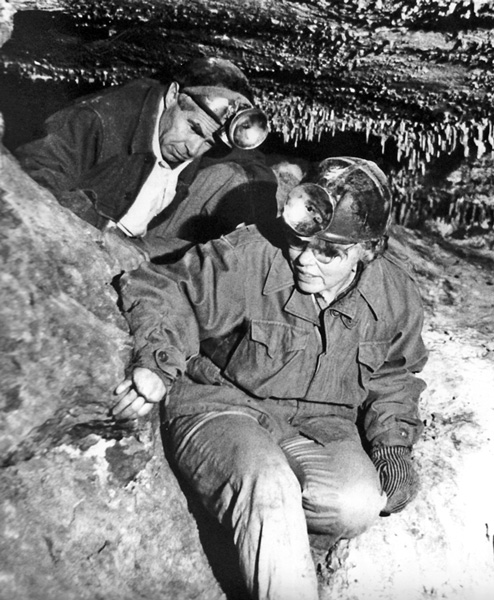 |
| Herb and Jan Conn spent decades exploring Jewel Cave and eventually wrote a book about their discoveries. |
The trip from the cave entrance (known as the target room) to where the Miseries starts takes about an hour of scrambling up and over huge masses of breakdown which, over the centuries, came from large portions of the cave ceiling and walls that have collapsed onto the cave floor. Most of this breakdown occurred when water was still actively coursing through the cave passageways. Some of these piles are so large that climbing gear is needed to either climb over or rappel down.
As we climbed up and over, or around and under the never-ending piles of breakdown, we passed through rooms with names like the Delicate Arch Room, and the Humdinger, finally ending up at the Whistle Stop. Because of the huge amounts of air moving into, or out of the cave, places like the Humdinger would make an eerie humming sound, while the Whistle Stop, a small hole coming into the main passageway, would occasionally produce a low sounding whistle. Winds blowing through the Whistle Stop have measured as high as 35 mph.
The easy part of the trip was now over. There would be no more walking or crawling on our knees. We had arrived at the entrance to the Miseries. For the next four hours we crawled on our bellies with the ceiling scraping our backs.
Herb finally announced, “Around this corner and we are out of the Miseries.” With anticipation I wiggled around the corner only to find the tiny crawlway getting smaller and tighter. It dropped down at a steep angle with a very tight turn at the bottom. In order to negotiate the turn, one had to lie on as much of his side as he could so he could make the bend. This was no easy task since the ceiling was just barely high enough to accommodate part of your shoulder. Gartzke was a little bigger than me and I had to push him, while Herby pulled him from the other side until he popped through.
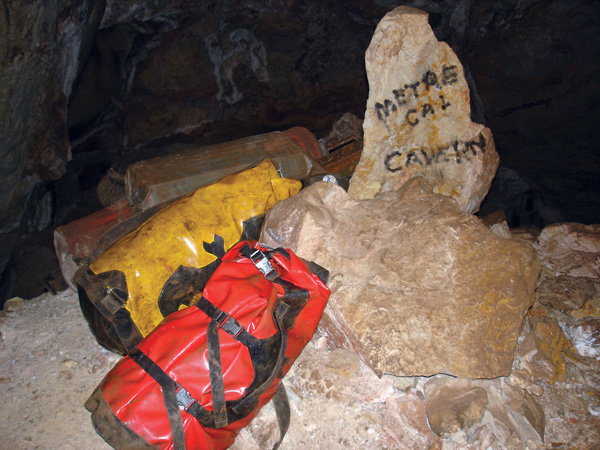 |
| Rescue packs are left at the entrance to Metrecal Cavern in the event of a deep underground emergency. |
After taking about 10 minutes to wiggle through, sweat pouring down my dirty face, I said to Herb, “I thought we were out of the Miseries.” He smiled and replied, “Yup, we are now in the Mini-Miseries and that place you just wiggled through is called the Calorie Counter.” It was aptly named since the ceiling height at the counter has been measured at 7 1/2 inches.
We finally emerged from the Mini-Miseries into Metrecal cavern. Metrecal, as I remember, is an average size room about 300 feet from end to end and filled with amazing decorations, some of which are found in no other cave in the world. Some of the more exciting sights in Metrecal are spectacular displays of gypsum and needle crystals. Beards of angel hair drape the walls and ceiling, gently flowing with the air coursing through the room. In a nearby passageway called Wildflower Walk, gypsum flowers grow so profusely from the floor that one has to step carefully to keep from crushing them. Sadly enough, only a handful of cavers a year experience Metrecal because of the difficulty getting there and then, of course, there is only one way to go back.
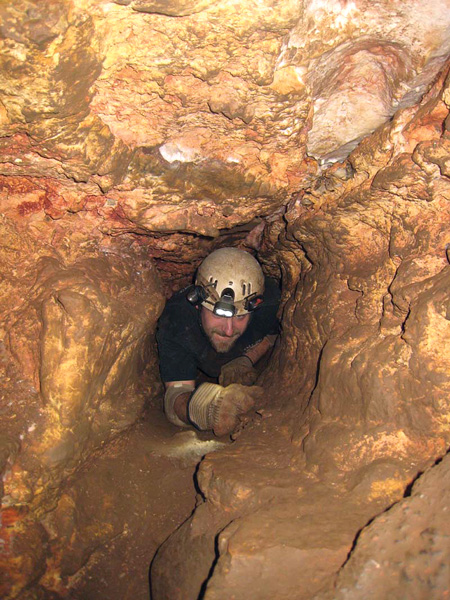 |
| Dan Austin wriggles through the Funny Little Hole en route to Metrecal Cavern. |
Jewel Cave is filled with wondrous decorations, from gypsum beards to bottlebrushes, rare hydromagnesite balloons and huge onyx flukes. And someone who is musically inclined, as Jan Conn is, could actually play a tune on the many flow stone riblets coming off the ceiling and walls. Stalactites, stalagmites, helictites, dogtooth spar and copious amounts of popcorn crystal adorn the walls, ceiling and floor of Jewel. There are ponds of water so crystal clear and still that you will walk right into them if you aren’t paying attention. One room known as King Kong’s Cage is more than 120 feet high, while Shady Acres covers an area of several acres in size. And as Jan said, “It’s always shady there.”
Jewel Cave, besides having regular tours, also offers an “off the path spelunkers tour” for the adventuresome. There is also a candlelight tour that starts from the original cave opening and follows along the first explored portions of the cave. Only physically fit and highly experienced cavers are allowed, for obvious reasons, to venture into the beautiful, surreal world of Metrecal Cavern.
I never returned to Metrecal. My climbing experiences inside Black Hills caves led me to rock climbing in the sunshine. However, my first and only journey into Metrecal is a trip I will forever cherish in my caving memories.
Editor’s Note: This story is revised from the March/April 2013 issue of South Dakota Magazine. To order a copy or to subscribe, call (800) 456-5117.


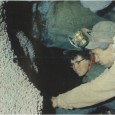

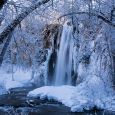

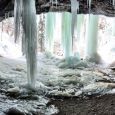
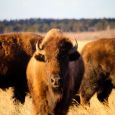


Comments